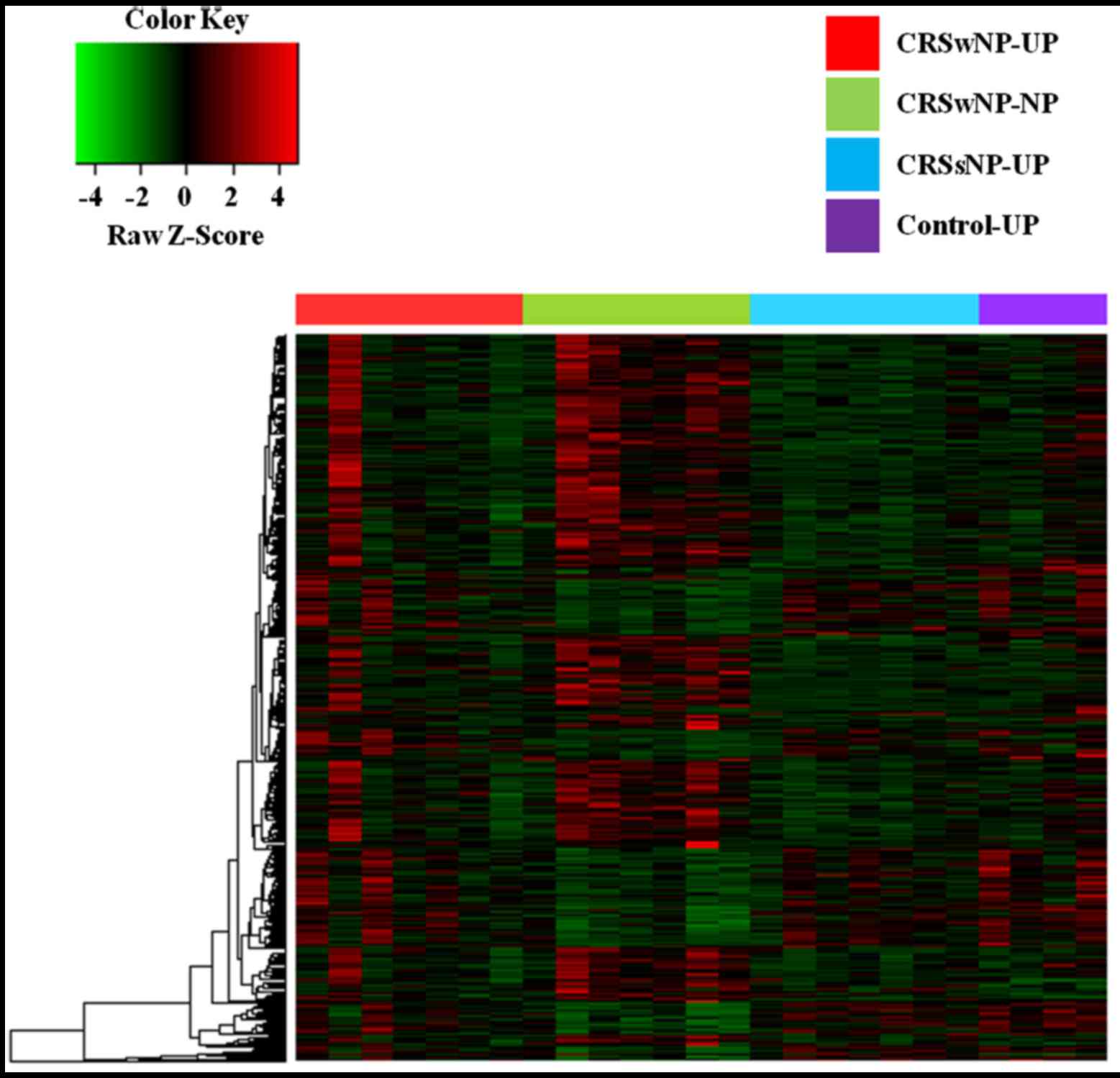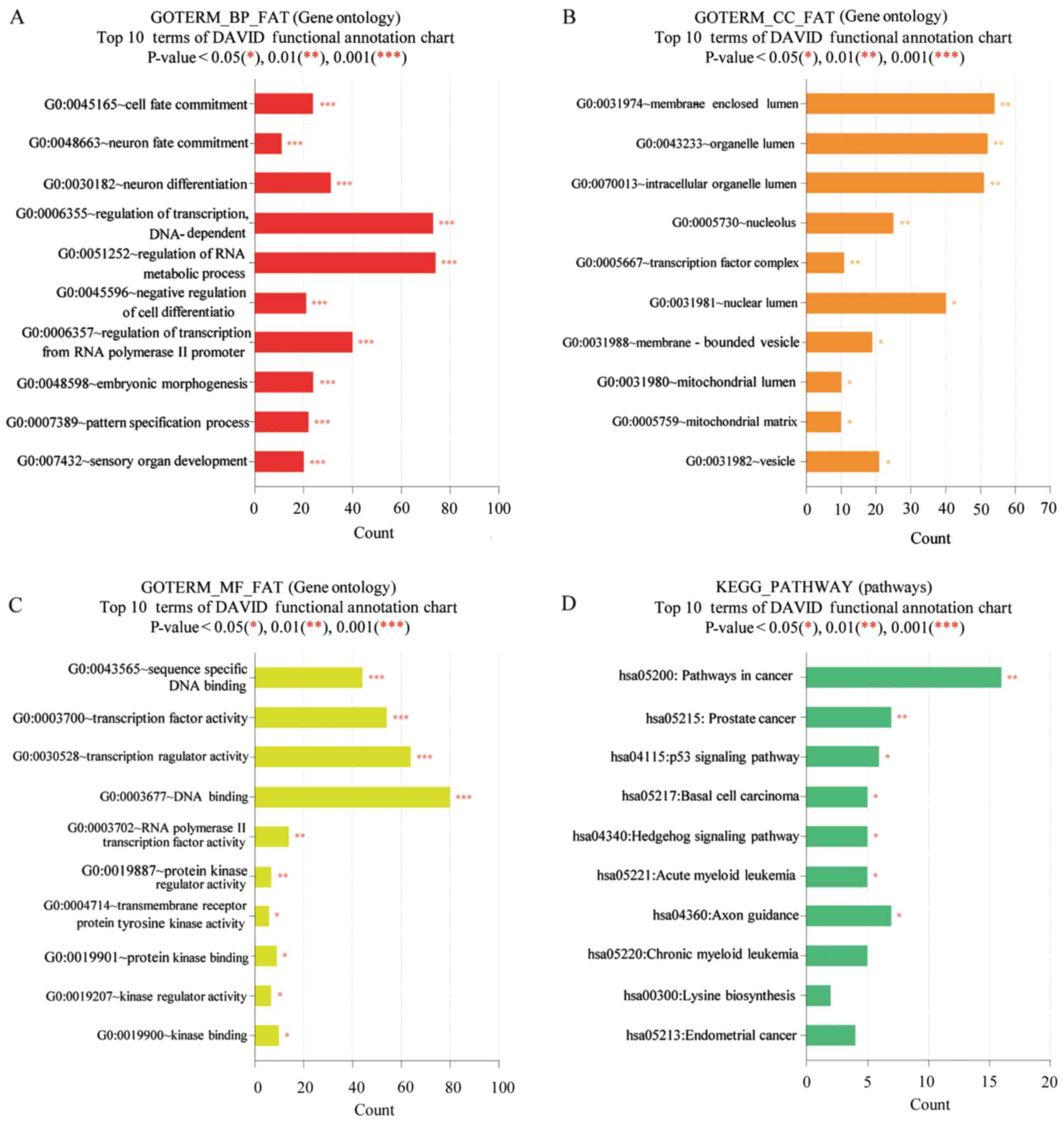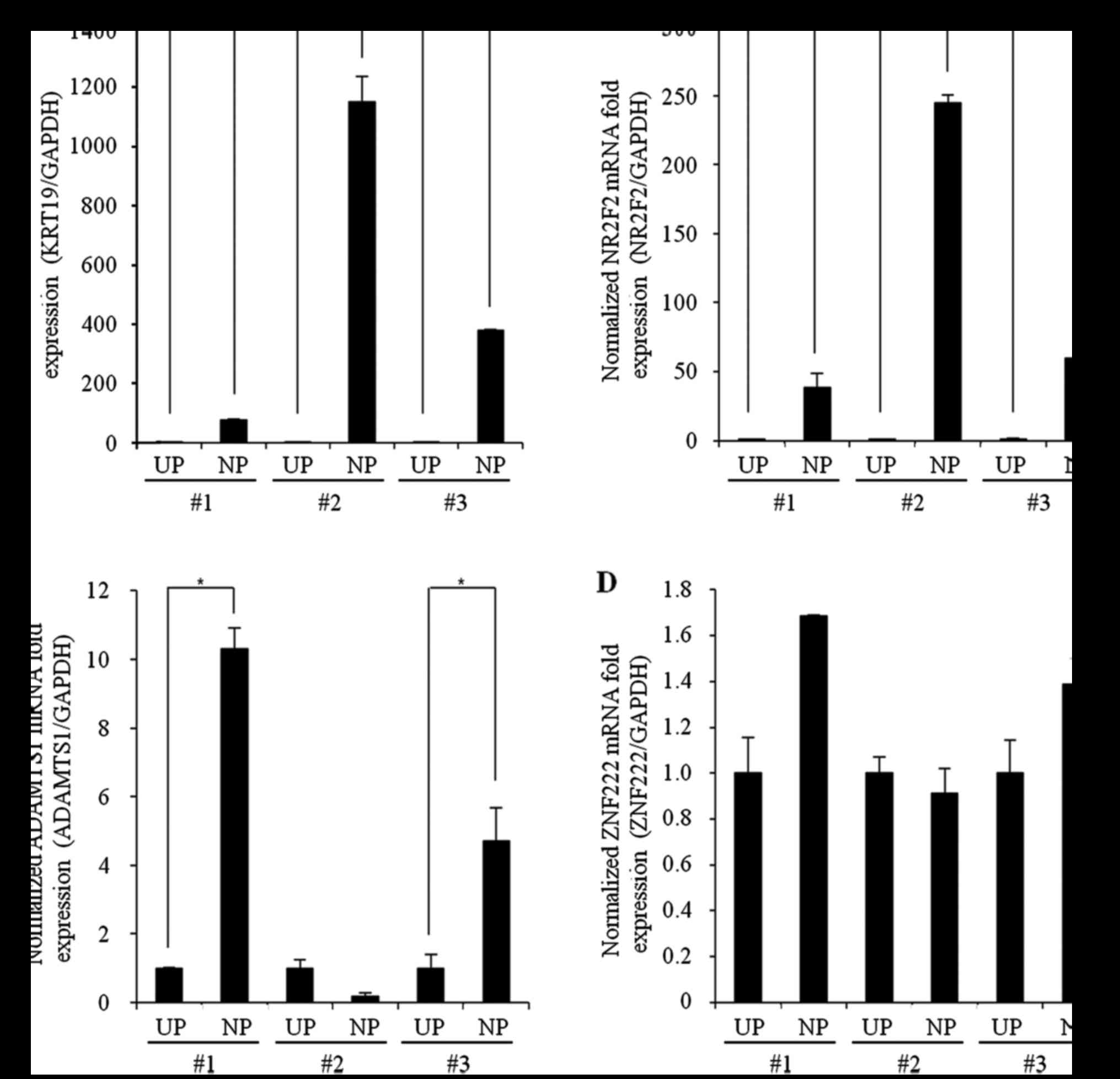Role of epigenetics in the pathogenesis of chronic rhinosinusitis with nasal polyps
- Authors:
- Published online on: November 7, 2017 https://doi.org/10.3892/mmr.2017.8001
- Pages: 1219-1227
-
Copyright: © Kim et al. This is an open access article distributed under the terms of Creative Commons Attribution License.
Metrics: Total
Views: 0 (Spandidos Publications: | PMC Statistics: )
Total PDF Downloads: 0 (Spandidos Publications: | PMC Statistics: )
Abstract
Chronic rhinosinusitis (CRS) is a highly prevalent disease characterized by mucosal inflammation of the nose and paranasal sinuses. CRS can be divided into two main categories, CRS with nasal polyps (NPs; CRSwNP) and CRS without NPs (CRSsNP). Although the pathophysiology of CRS remains unclear, DNA methylation has been implicated in the etiology of CRSwNP. The aim of the present study was to elucidate whether DNA methylation of specific genes is involved in the development of NPs. In total, 18 individuals were included in the present study, and were divided into three groups: CRSwNP (n=7), CRSsNP (n=7) and healthy controls (n=4). NP tissues were obtained from the seven patients with CRSwNP and biopsies of the inferior turbinate mucosa from all three groups were used as controls. Methylated genes detected by methyl‑CpG‑binding domain sequencing were validated by methylation‑specific polymerase chain reaction (PCR), bisulfite sequencing, and reverse transcription‑quantitative PCR (RT‑qPCR). Methyl‑CpG‑binding domain sequencing identified 43,674 CpG islands in 518 genes. The promotor regions of 10 and 30 genes were hypermethylated and hypomethylated, respectively, in NP samples compared with controls. The top four genes with altered hypomethylation in NP tissues were, Keratin 19 (KRT19), nuclear receptor subfamily 2 group F member 2 (NR2F2), A Disintegrin‑like And Metallopeptidase (Reprolysin Type) with Thrombospondin type 1 motif 1 (ADAMTS1) and zinc finger protein 222 (ZNF222). RT‑qPCR demonstrated that the expression levels of KRT19, NR2F2 and ADAMTS1 were significantly increased in NP tissues; however, there was no difference in the levels of ZNF222 between NP and control tissues. Further studies are required to confirm the relevance of these epigenetic modifications in the mechanisms underlying NP formation.












